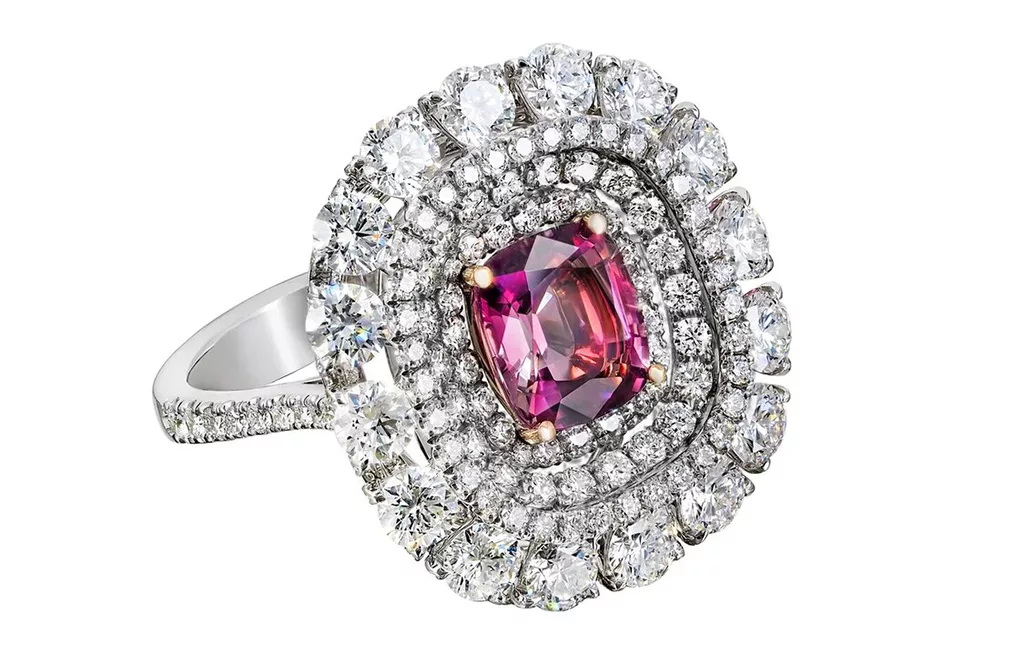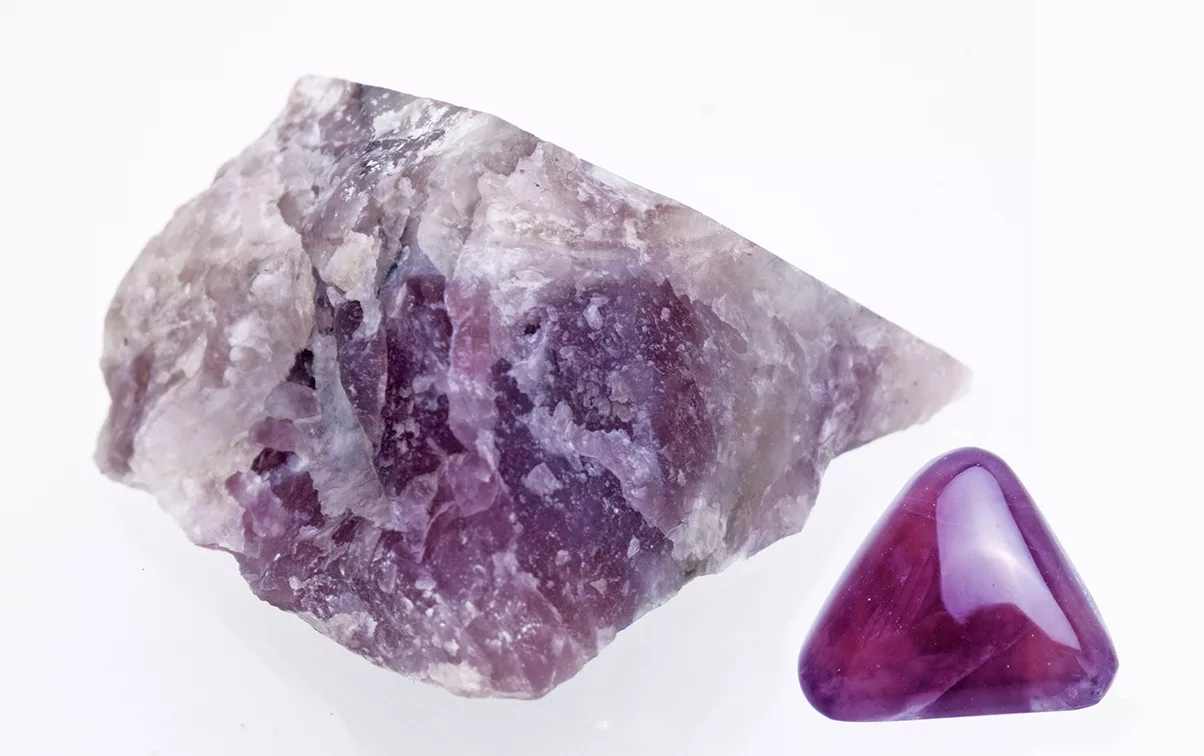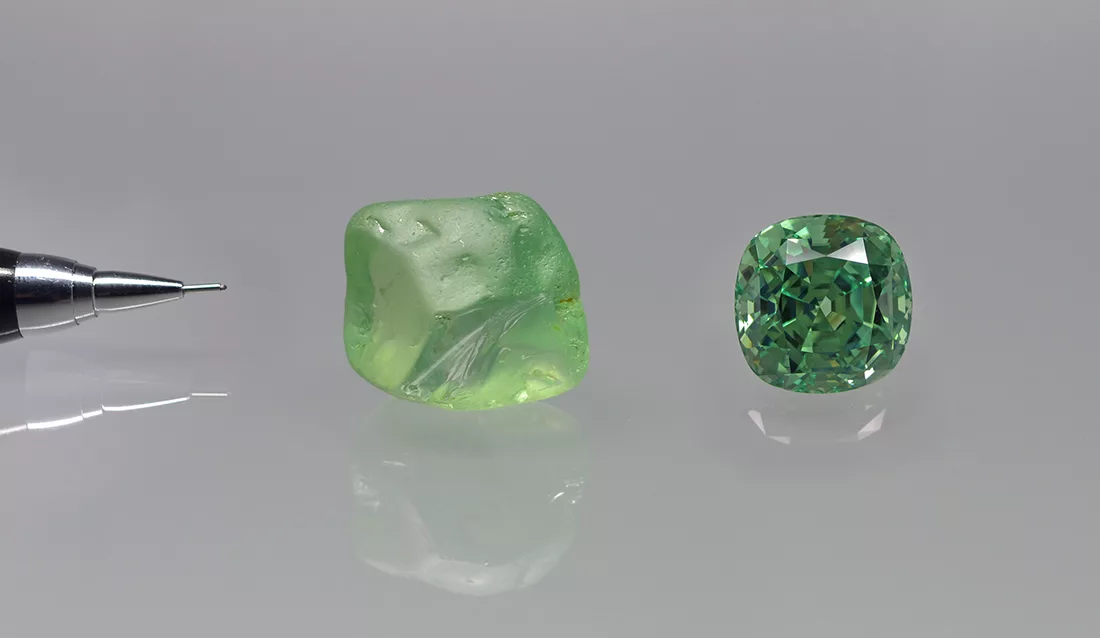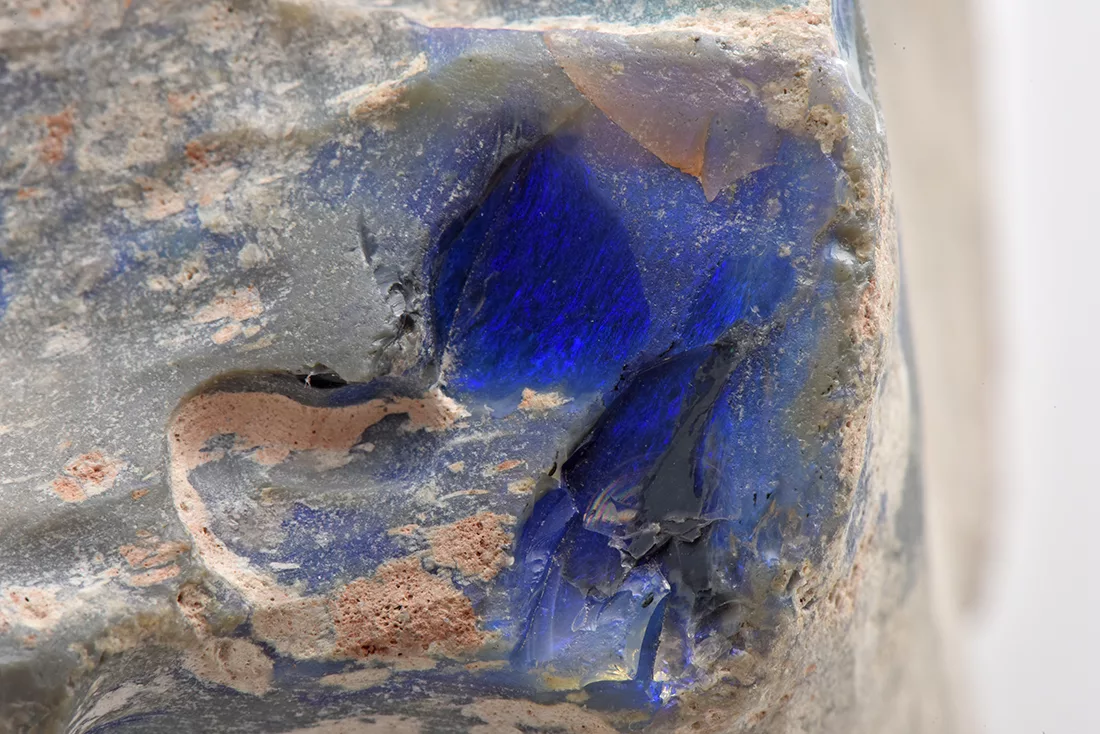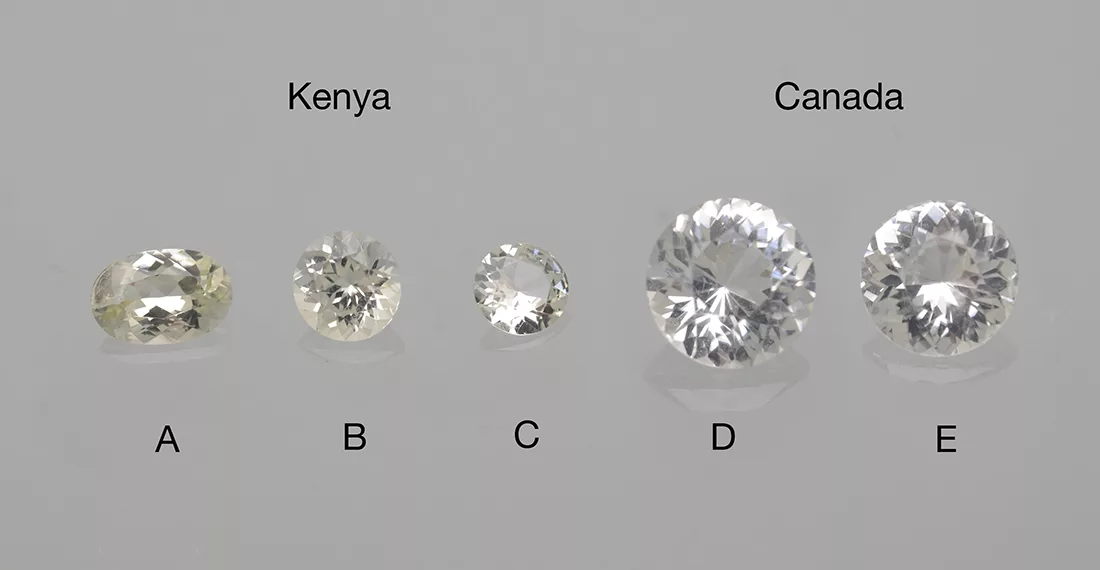To be, or not to be, that is the question: chrysoberyl versus alexandrite
The mineral chrysoberyl BeAl₂O₄ is a highly appreciated gemstone due to its rarity, brilliance, and beauty and comes in attractive colours commonly ranging from colourless (chemically pure) to yellow, yellowish green, green, and brownish green to dark brown, mostly related to the presence of iron in its cry
A gemmologist’s delight: poudretteite, musgravite, taaffeite, and grandidierite
by Dr. M.S. Krzemnicki, first published in Facette […]
Deep purple vesuviatine from Pakistan
by Prof. H.A. Hänni, first published in Facette 26 (May […]
Green spodumene sold as emerald imitation
Spodumene crystals (longest item about 50 cm long and 5.9 kg heavy) submitted to SSEF as new 'emeralds' from Pakistan shown here together with a faceted emerald from Pakistan
Rare Earth Elements in Danburites
The calcium-boron-silicate danburite is a rather rare c […]
Polycristalline Kyanite
first published in Facette 22 (February 2016) The Swiss […]
Colourless Chrysoberyl from Mogok
first published in Facette 22 (February 2016) Chrysober […]
Study of opalised Dinosaur Vertebra
Recently, the Swiss Gemmological Institute SSEF received an exceptional opalised dinosaur vertebra for study. This specimen was reportedly from Lightning Ridge (New South Wales in Australia) – a world famous source of dark opals and opalised plant and animal fossils - and was already photographed by Elizabeth
Colourless Diopside from Kenya and Canada
first published in Facette 22 (February 2016) Diopside, […]

